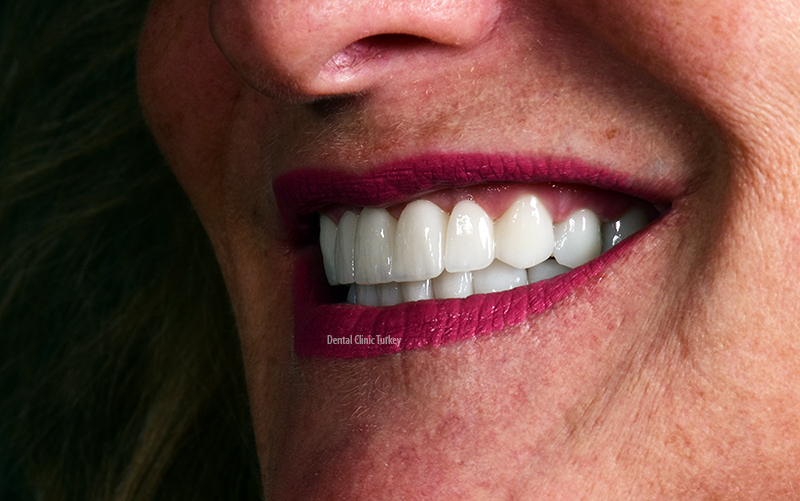Monolithic zirconia refers to dental restorations made entirely from a single piece of zirconia ceramic. Zirconia, a crystalline form of zirconium dioxide, is known for its exceptional strength, durability, and biocompatibility, making it a popular material in dentistry. Here are some key aspects of monolithic zirconia:
Properties and Benefits
Strength and Durability: Monolithic zirconia is highly resistant to fractures and wear, making it suitable for long-lasting dental restorations.
Aesthetics: Advances in zirconia technology have improved its translucency and color, allowing it to more closely mimic natural tooth enamel. This makes it a good choice for both anterior (front) and posterior (back) teeth.
Biocompatibility: Zirconia is well-tolerated by the body, reducing the risk of allergic reactions and gum irritation.
Precision: These restorations are often designed using CAD/CAM (computer-aided design and manufacturing) technology, ensuring precise fits and reducing the need for adjustments.
Applications in Dentistry
Monolithic zirconia is used to create various dental restorations, including:
Crowns: Caps placed over damaged or decayed teeth to restore their shape, size, strength, and appearance.
Bridges: Dental appliances that replace one or more missing teeth by anchoring to adjacent teeth or implants.
Implant Abutments: Connectors placed on dental implants to support crowns, bridges, or dentures.
Inlays and Onlays: Partial coverage restorations used to repair teeth with moderate decay or damage.
Comparison with Other Materials
Porcelain-Fused-to-Metal (PFM): Traditional PFM crowns have a metal substructure with a porcelain overlay. While PFM crowns are strong, they can sometimes show a dark metal line at the gum line and are less aesthetically pleasing compared to zirconia.
Lithium Disilicate (e.max): Another popular ceramic material known for its aesthetic properties. It is more translucent than zirconia but not as strong, making it more suitable for anterior restorations where aesthetics are critical.
Fabrication Process
Digital Impressions: A digital scan of the patient’s teeth is taken to create a 3D model.
Design: Using CAD software, the restoration is designed based on the digital model.
Milling: The design is then milled from a solid block of zirconia using CAM technology.
Sintering: The milled zirconia is sintered at high temperatures to achieve its final strength and hardness.
Finishing: The restoration is polished and, if necessary, stained to match the natural teeth.
Monolithic zirconia is a versatile and increasingly popular material in restorative dentistry, offering a balance of strength, durability, and improved aesthetics.
What are the advantages of monolithic zirconia?
Monolithic zirconia offers several advantages, making it a preferred material for dental restorations. Here are the key benefits:
1. Exceptional Strength and Durability
- High Fracture Resistance: Monolithic zirconia is known for its exceptional toughness and resistance to fractures, making it ideal for both posterior and anterior restorations.
- Long Lifespan: Due to its durability, restorations made from monolithic zirconia often have a longer lifespan compared to those made from other materials.
2. Aesthetic Appeal
- Improved Translucency: Advances in zirconia technology have enhanced its translucency, allowing it to better mimic the natural appearance of tooth enamel.
- Customizable: It can be stained and glazed to match the color of adjacent teeth, providing a more natural look.
3. Biocompatibility
- Hypoallergenic: Zirconia is well-tolerated by the body and does not cause allergic reactions or adverse tissue responses.
- Gentle on Gums: The smooth surface of zirconia is gentle on surrounding soft tissues, promoting healthy gums.
4. Precision and Fit
- CAD/CAM Technology: Monolithic zirconia restorations are typically designed and fabricated using CAD/CAM technology, ensuring precise fit and reducing the need for extensive chairside adjustments.
- Consistent Quality: The digital fabrication process ensures consistent quality and accuracy in the final restoration.
5. Minimal Tooth Reduction
- Conservative Preparation: Due to its high strength, restorations can be made thinner than those from other materials, allowing for more conservative tooth preparation and preserving more of the natural tooth structure.
6. Versatility
- Wide Range of Applications: Monolithic zirconia can be used for crowns, bridges, implant abutments, inlays, onlays, and even full-arch prostheses.
- Suitable for High-Stress Areas: Its strength makes it suitable for use in high-stress areas such as molars and areas where patients have bruxism (teeth grinding).
7. Cost-Effective
- Reduced Need for Repairs: The durability and strength of zirconia mean that restorations are less likely to need repair or replacement, potentially lowering long-term costs.
- Single Material: Being a monolithic material, it eliminates the need for layering with other materials, simplifying the manufacturing process and potentially reducing costs.
8. Resistance to Wear
- Low Wear on Opposing Teeth: Properly polished monolithic zirconia is less abrasive to opposing teeth compared to some other ceramic materials, reducing the risk of wear on natural teeth.
9. Chemical Stability
- Resistance to Corrosion: Zirconia is chemically inert, resisting corrosion and degradation over time, which ensures long-term stability in the oral environment.
These advantages make monolithic zirconia a highly effective and reliable material for a variety of dental restorations, offering both functional and aesthetic benefits.

